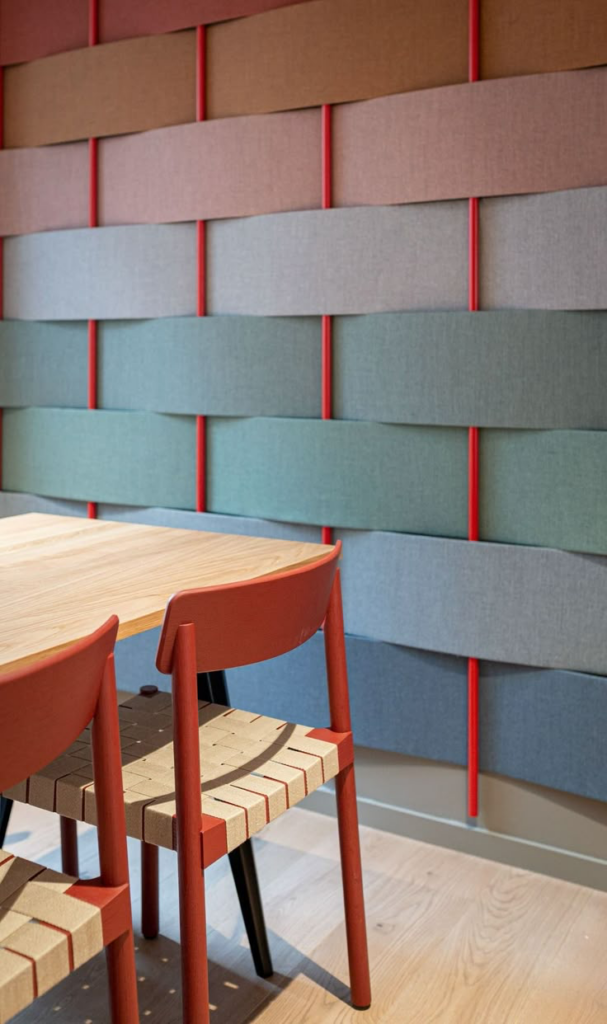Ergonomics in interior design refers to the science of optimizing spaces for human efficiency, safety, and comfort. It encompasses everything from the selection of furniture to the strategic layout of spaces, ensuring that they support human posture, movement, and overall well-being. With people spending a significant amount of time indoors, whether at home or in the workplace, designing spaces with ergonomics in mind is crucial for promoting health and enhancing productivity.
Poorly designed interiors can lead to discomfort, physical strain, and even long-term health issues such as musculoskeletal disorders, eye strain, and fatigue. By understanding and applying ergonomic principles, designers can create spaces that improve posture, reduce stress on the body, and facilitate seamless movement within an environment.
This article explores the key characteristics of ergonomic interior design, different approaches to achieving comfort, and various ways to optimize layouts and floor plans for maximum well-being.
Key Characteristics of Ergonomic Interior Design
- Posture Support – Ergonomic furniture should support the natural curves of the body, reducing strain on muscles and joints.
- User-Centric Design – Interiors should be designed around the specific needs of users, accommodating various body types, heights, and mobility levels.
- Optimal Reach & Accessibility – Items should be placed within comfortable reach to prevent overextension or awkward postures.
- Efficient Space Utilization – Layouts should allow for smooth movement and avoid obstructions.
- Lighting Considerations – Proper lighting reduces eye strain and enhances visibility.
- Noise Control & Acoustics – A comfortable space should minimize unnecessary noise disturbances.
- Air Quality & Ventilation – Proper airflow and temperature control contribute to an environment conducive to comfort and productivity.
The Importance of Ergonomics in Interior Design
1. Health Benefits
- Reduces back, neck, and joint pain by promoting proper posture.
- Minimizes the risk of repetitive strain injuries (RSIs).
- Enhances respiratory health through improved airflow and ventilation.
2. Increased Productivity
- In workspaces, ergonomic design helps employees stay focused and efficient.
- Comfortable environments encourage creativity and collaboration.
3. Enhanced Well-being & Quality of Life
- In homes, ergonomic designs contribute to relaxation and reduced physical stress.
- Properly designed bedrooms and seating areas improve sleep quality and relaxation.
4. Better Aesthetics & Functionality
- Ergonomic designs blend form with function, ensuring that interiors are both visually appealing and practical.
Ergonomic Approaches in Interior Design
1. Furniture Selection for Ergonomic Comfort
- Chairs: Adjustable chairs with lumbar support reduce back strain. The seat height should allow feet to rest flat on the floor while maintaining a 90-degree knee angle.
- Desks: Should be at a height where arms rest at a 90-degree angle while typing. Adjustable desks allow users to switch between sitting and standing.
- Sofas & Lounge Chairs: Should support the spine’s natural curve and offer appropriate seat depth and cushioning.
- Beds & Mattresses: Must provide proper spinal alignment, with pillow support adapted to individual sleeping postures.
- Storage Solutions: Cabinets and shelves should be positioned to prevent excessive bending or reaching.
2. Optimizing Layouts and Floor Plans for Maximum Comfort
- Traffic Flow & Movement: Layouts should prevent congestion and allow easy movement between key areas.
- Work Triangle in Kitchens: The distance between the sink, stove, and refrigerator should be optimized for efficiency.
- Living Room Arrangements: Seating should be placed to encourage conversation while maintaining comfort.
- Office Ergonomics: Desks should be positioned to maximize natural light and reduce glare.
- Bedroom Layouts: Beds should have ample space on both sides for ease of access and comfort.
3. Lighting Considerations in Ergonomic Design
- Task Lighting: Adjustable lighting should be used for reading, working, and other focused activities.
- Ambient Lighting: Should provide a warm and evenly distributed glow to reduce eye strain.
- Natural Light Integration: Windows and skylights should be strategically placed to maximize daylight while minimizing glare.
4. Acoustics & Noise Reduction Strategies
- Soundproofing Materials: Carpets, curtains, and acoustic panels help absorb noise.
- Zoning Techniques: Separate workspaces from high-traffic areas to minimize distractions.
- Furniture Arrangement: Placing bookshelves and upholstery in strategic locations can enhance sound insulation.

5. Climate Control & Ventilation
- Proper Air Circulation: Windows should be positioned to promote cross-ventilation.
- Thermal Comfort: Insulation, heating, and cooling systems should maintain optimal temperatures year-round.
- Humidity Control: Dehumidifiers or indoor plants can help regulate moisture levels for added comfort.
Bonus: Acoustics in Interior Design – How to Design Soundproof and Echo-Free Interiors
Acoustics play a vital role in the overall comfort of an interior space. Poor acoustics can lead to excessive noise levels, echoing, and distractions that reduce productivity and relaxation. Designing interiors with effective soundproofing and noise control ensures a quieter, more pleasant environment.
1. Principles of Acoustics in Interior Design
- Absorption: Soft materials like carpets, fabric panels, and upholstered furniture help absorb sound waves.
- Diffusion: Irregular surfaces and decorative elements can help scatter sound evenly throughout a space.
- Reflection: Hard surfaces like glass, concrete, and tile reflect sound, which can be minimized with acoustic treatments.
- Transmission Control: Walls, ceilings, and floors should be designed to prevent sound from passing between rooms.

2. Materials for Soundproofing Interiors
- Acoustic Panels: Foam or fabric-wrapped panels absorb noise and reduce echo.
- Carpets and Rugs: Soft surfaces prevent sound from bouncing off hard flooring.
- Heavy Drapes and Curtains: Absorb noise and block external sounds.
- Insulated Walls and Ceilings: Using sound-dampening insulation can minimize noise transfer.
3. Layout and Design Strategies for Better Acoustics
- Furniture Placement: Bookshelves, couches, and large decor items can act as noise barriers.
- Zoning: Separating noisy areas from quiet spaces improves overall comfort.
- Acoustic Ceilings: Dropped ceilings with sound-absorbing tiles reduce echo.
4. Acoustic Solutions for Different Spaces
- Home Offices: Use sound-absorbing panels to create a quiet workspace.
- Bedrooms: Thick carpets and padded headboards enhance noise reduction.
- Living Rooms: Layering textiles (curtains, rugs, upholstery) minimizes sound reflection.
- Restaurants & Open Spaces: Acoustic ceiling treatments and wall panels help reduce noise buildup.
Conclusion
Ergonomics in interior design is not just about aesthetics; it is about creating spaces that support health, efficiency, and well-being. Whether designing a home, office, or public space, applying ergonomic principles can significantly improve comfort and functionality. Similarly, incorporating effective acoustics ensures that spaces are quiet, peaceful, and free from disruptive noise, ultimately enhancing the quality of life.
Prioritizing ergonomic design is an investment in long-term well-being. Whether for work, relaxation, or social interaction, well-designed interiors ensure that people can move, sit, and work comfortably, ultimately improving their day-to-day experiences.



